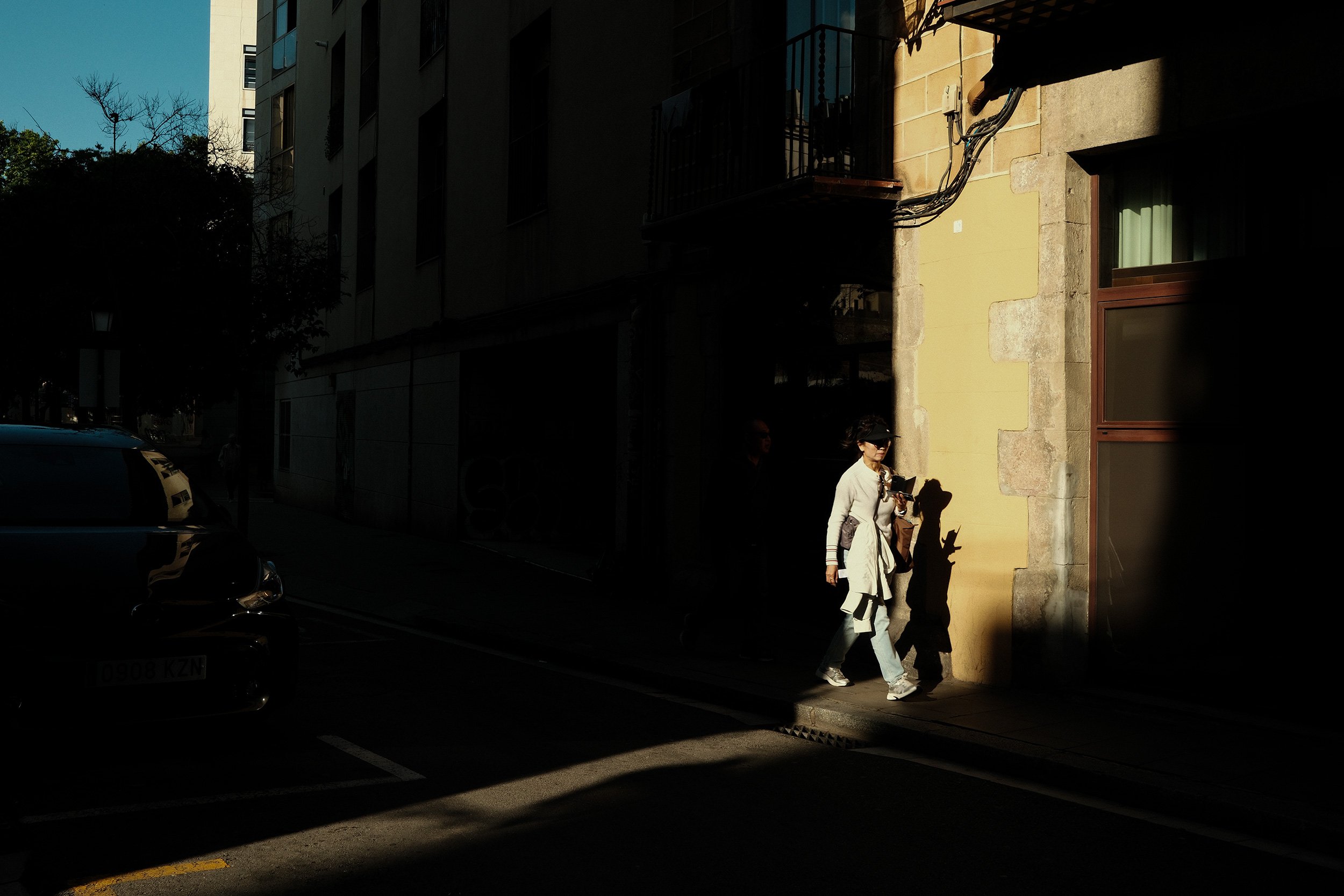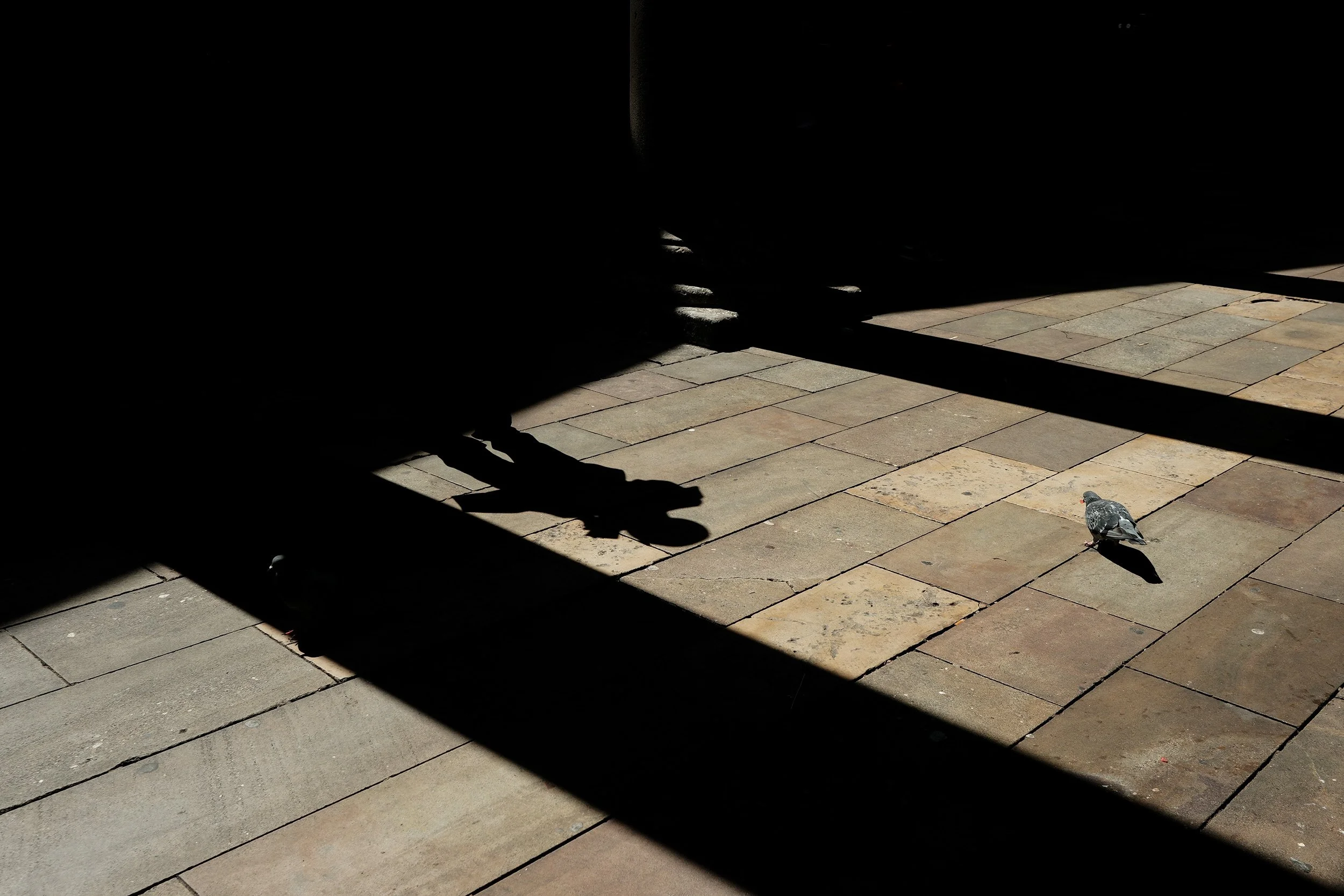Chasing the Light in Barcelona
While exploring Barcelona last month, we experienced a variation of weather. Initially, I was worried. Would I not experience Barcelona in what I imagined—beautiful weather and a favourable climate I love? After capturing only around 100 photos from the first 24 hours, I remember thinking, “I’m not going to get anything from this trip.”
I was patient. I pushed that frustration aside and enjoyed what was before us regardless of what was to come. This was Barcelona! We would make the most of our time together in this beautiful city. The duration of our time in the city introduced rain almost daily, although periodic. But the weather changed quickly; the rain eased, and the clouds broke to clear skies and beautiful sun. Thankfully, the best weather was late in the day, when the sun was getting lower in the sky, and the shadows created fantastic scenes to capture. The light was perfect.
The Importance of Light
Light is the most critical factor in photography. Light’s quality, direction, and colour set the mood and atmosphere, create depth, and stimulate emotions. It also aids storytelling by guiding the viewer’s eye within the composition, highlighting your subjects and adding interest through textures and patterns. Great light can be experienced almost anywhere, but having numerous interesting subjects surrounded by historic architecture adds to an experience that cannot be missed.
La Boqueria Public Market
Barcelona Architecture
European architecture has a distinct historical, cultural, and environmental context. It boasts a history dating back thousands of years, and the continent’s history has introduced various styles and architectural techniques. Many European cities have narrow, irregular streets shaped by centuries of organic growth around central squares and religious structures.
Regarding Barcelona’s architectural history and uniqueness, the impact of architect and designer Antoni Gaudí must be emphasized. Gaudí transformed Barcelona with his contributions to the Catalan Modernisme movement, creating iconic structures like the Sagrada Família, Park Güell, Casa Batlló, and Casa Milà. These structures have become major attractions characterized by organic forms and intricate details, significantly boosting the city’s economy and international reputation. Gaudí’s work throughout the city is a defining part of Barcelona’s cultural identity.
Self Portrait at Ciutadella Park
Explore and Follow
Chasing the light involves noting how the shifting sun creates architectural patterns and shapes. Where does the light shine? What does it highlight? What does it conceal and reveal? Once an interesting scene is discovered, it’s easy to get caught up in envisioning what it could be. How is this scene going to transpire? The sun’s movement can change a scene quickly. The concealing clouds can change the mood of a scene in seconds. Deciding how long to work a scene is essential, as many more avenues exist to explore.
I walked around the city in the evenings, visiting many areas, including the Gothic Quarter. There are many paths to take there, a lot of people around, and many regions where the sun peeks through the gap between buildings. Later in the evening, this casts long shadows for interesting compositions. In a city like Barcelona, it doesn’t take long for someone to enhance an interesting scene.
According to my phone, I tallied up approximately 20,000 steps daily in Barcelona, most of which were taken in commendable conditions: partial clouds, low sun, warm light, and a slight breeze. You can never be 100% sure of what conditions you will encounter. Still, once everything comes together, it’s easy to feel motivated, especially with a camera and a great city to explore.


